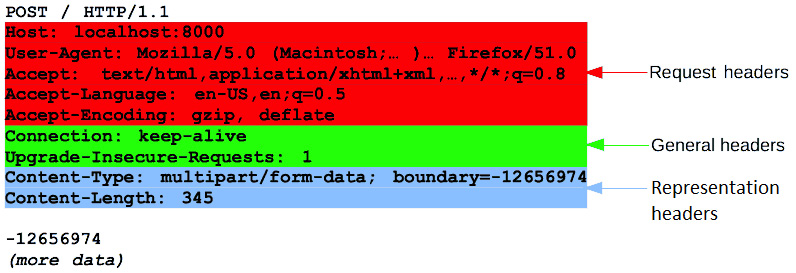Mastering HTTP
Now that we have a better understanding of the HTTP concept, let’s take a look at the different parts of HTTP that we need to understand in order to build a web application.
We have already seen the request and response, but let’s take a deeper look at the different parts that compose the request and the response (headers, payloads, versions, and methods).
HTTP headers
Each request and response has a set of headers. These are key-value pairs and provide additional information about the request or the response.
While both the request and response headers may look similar, they are not the same, although they do share common key-value pairs.
Request headers
We will start by analyzing in Figure 9.6 what is included in the request header:

Figure 9.6 – Attributions and copyright licensing by Mozilla Contributors is licensed under CC-BY-SA 2.5
Let’s group the different header properties:
- Representation...































































